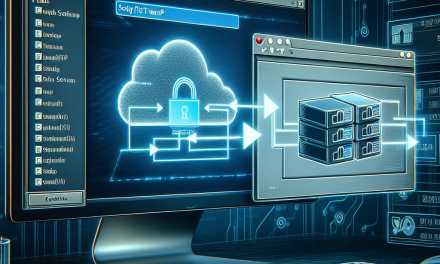Introduction
Public Key Infrastructure (PKI) is a critical component of securing communications and transactions in a digital environment. With increasing cybersecurity threats, understanding the architecture of Windows Server PKI is essential for IT professionals and organizations looking to enhance their security posture. In this article, we will explore the core components, functionalities, and benefits of PKI within Windows Server.
What is PKI?
Public Key Infrastructure (PKI) is a framework that manages digital certificates and public-key encryption. It supports secure communication over networks, enabling authentication, confidentiality, integrity, and non-repudiation of information. PKI is crucial in environments where secure data transmission is needed, such as in financial services, healthcare, and government sectors.
Components of Windows Server PKI
Windows Server PKI is built on several key components that work together to establish and manage a secure digital environment. The primary components include:
1. Certification Authority (CA)
The Certification Authority is the backbone of Windows PKI. It is responsible for issuing and managing digital certificates. A CA can be standalone or enterprise-based:
- Standalone CA: Operates independently and is typically used for smaller organizations.
- Enterprise CA: Integrated into Active Directory (AD), allowing for automatic certificate enrollment and management for domain-joined machines.
2. Digital Certificates
Digital certificates are electronic credentials that use asymmetric cryptography to provide secure identification. They contain information about the identity of the certificate holder and the public key, along with the CA’s digital signature to ensure authenticity and integrity.
3. Certificate Revocation List (CRL)
The Certificate Revocation List is a list maintained by the CA that contains certificates that have been revoked before their expiration date. This is crucial for maintaining trust within the PKI framework, as it helps ensure that compromised certificates cannot be used maliciously.
4. Online Certificate Status Protocol (OCSP)
OCSP is an alternative to CRLs for checking the status of a certificate. It provides real-time validation, allowing clients to verify whether a certificate is valid, suspended, or revoked, thereby improving the efficiency of the PKI system.
5. Key Distribution and Management
Key management involves generating, distributing, and storing cryptographic keys. Windows Server PKI includes automated key enrollment processes that simplify the management of keys and certificates, ensuring they are issued and renewed in a timely manner.
Architecture of Windows Server PKI
The architecture of Windows Server PKI can be divided into the following layers:
1. Root CA
At the top of the hierarchy is the Root CA, which creates and signs digital certificates for subordinate CAs. It is crucial to protect the Root CA since its compromise would affect the trustworthiness of the entire PKI system.
2. Subordinate CA
Subordinate CAs, also known as intermediate CAs, issue certificates to end entities and users. This structure enhances security by minimizing the exposure of the Root CA. Subordinate CAs can be organized within a hierarchy based on the organization’s needs.
3. Certificate Policies and Practices
Certificate policies define the rules and procedures for certificate usage and management, while Certificate Practice Statements (CPS) outline how the PKI will operate. This governance framework helps in maintaining compliance and establishing trust within the PKI environment.
4. Clients and Applications
All users and applications that require secure communication utilize the PKI framework for obtaining and validating certificates. This includes VPNs, email encryption, secure web servers (HTTPS), and more.
Benefits of Windows Server PKI
Implementing a Windows Server PKI offers several benefits:
- Enhanced Security: Provides strong encryption and authentication mechanisms that protect sensitive data.
- Scalability: Easily scales with the organization’s growth and can adapt to various security requirements.
- Automated Management: Simplifies certificate management through automated enrollment, renewal, and revocation processes.
- Cost-Effective: Reduces costs associated with third-party certificates and helps in managing internal resources efficiently.
Conclusion
Understanding the architecture of Windows Server PKI is vital for organizations that seek to implement a robust cybersecurity strategy. By leveraging its components, such as Certification Authorities, digital certificates, and revocation mechanisms, organizations can establish a secure environment that promotes trust and integrity. As cybersecurity threats continue to evolve, investing in a comprehensive PKI solution remains a cornerstone of modern IT security practices.
For more insights and guidance on Windows server solutions, stay tuned to WafaTech Blogs, where we continue to explore the latest in technology trends and strategies.





